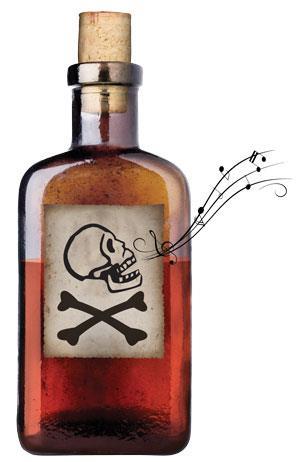Education research - teaching and communicating chemistry through opera
The importance of communicating chemistry to the public should not be underestimated. In an era where the way of life to which we have become accustomed is threatened, it is vital that society understands the disciplines that can help us to meet the challenges we face. In recent years, progress has been made in advancing the public understanding of science, and many scientists are now actively involved in public engagement work. An unusual context for communicating chemistry through opera has been described in an article by André, based on a lecture delivered to a range of audiences over the last two years.
Many operas feature chemically-related skulduggery, normally in the form of a poisoning incident, and this article provides fascinating reading for those of us with little knowledge of this area of the arts. While opera may not be to everybody's tastes, many films and TV shows have featured chemistry in a historical context, including the BBC's recent hit Ripper Street, and this sort of approach could easily be adapted to other forms of art.
In discussing the history of poisons in opera, the article sheds light on a range of interesting historical developments ranging from the extensive application of poisons in Roman times to the use of poison-tipped arrows by Caribbean Indians. The mysterious death of Mozart is also mentioned, but the most interesting parts of the article are those that go into deeper chemical detail.

The opera Suor Angelica features a character who commits suicide by drinking a concoction of poisonous herbs. These include cherry laurel, which contains amygdalin, a compound that releases cyanide into the bloodstream when ingested. This provides context for the discussion of transition metal chemistry and the effect of different ligands on the behaviour of biological systems. The chemistry of antidotes is also covered, including the role of thiosulfate in the conversion of cyanide into the easily excreted thiocyanate, featuring theory that would be accessible to school students.
Arsenic compounds are also considered, notably Scheele's green (CuHAsO3), which was used extensively in green wallpaper in the 19th century (80% of the 30 million rolls of wallpaper sold in England in 1870 contained arsenic). The downside for the inhabitants of homes decorated with such wallpaper was that microorganisms present in damp homes were able to convert the arsenic to trimethylarsine (As(CH3)3), a gas which led to sickness and even death in many cases.
There are many other fascinating examples of chemistry throughout the article, which shows that chemistry really is everywhere. With a little background research, the subject really can be brought to life in quite unexpected ways.
References
J P Andre, J. Chem. Ed., 2013, 90, 352 (DOI: 10.1021/ed300445b)









No comments yet